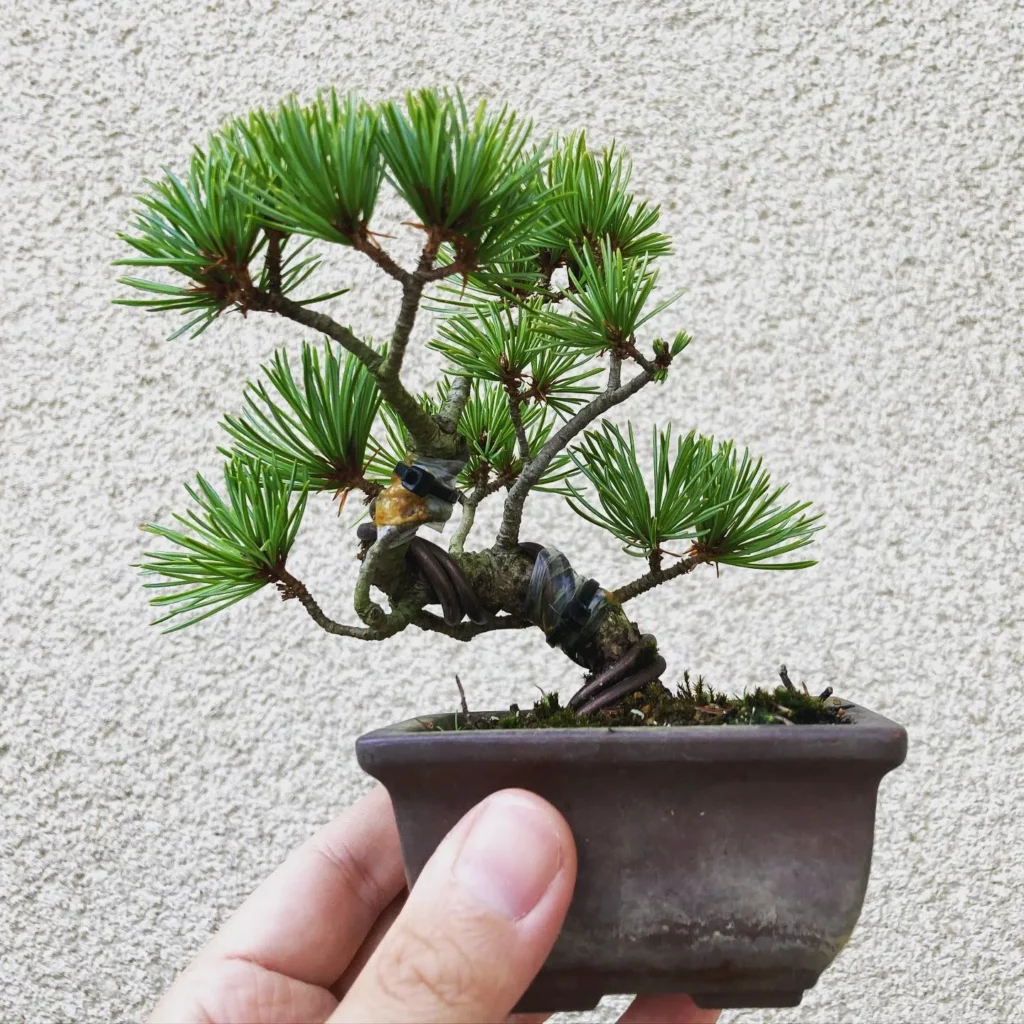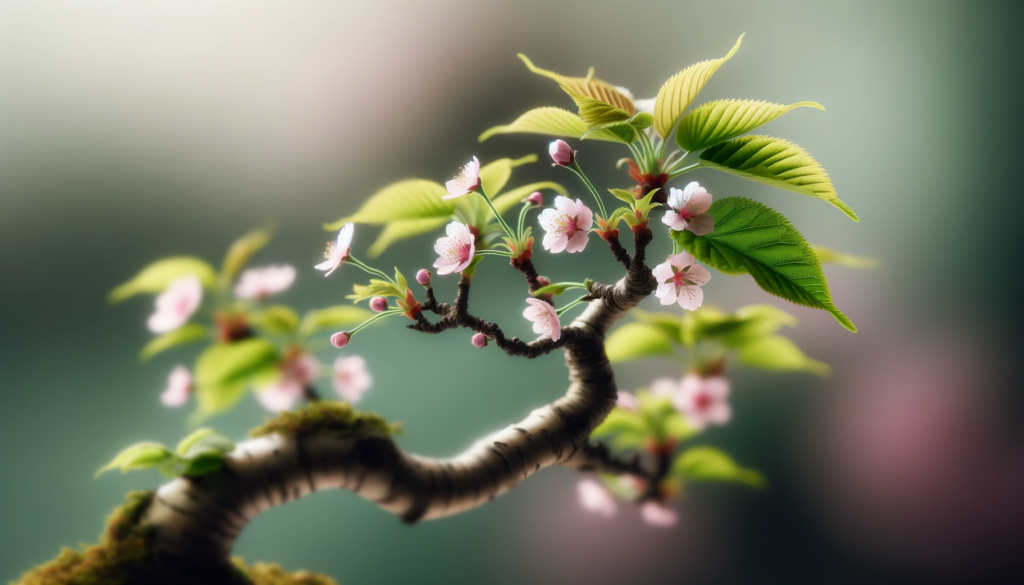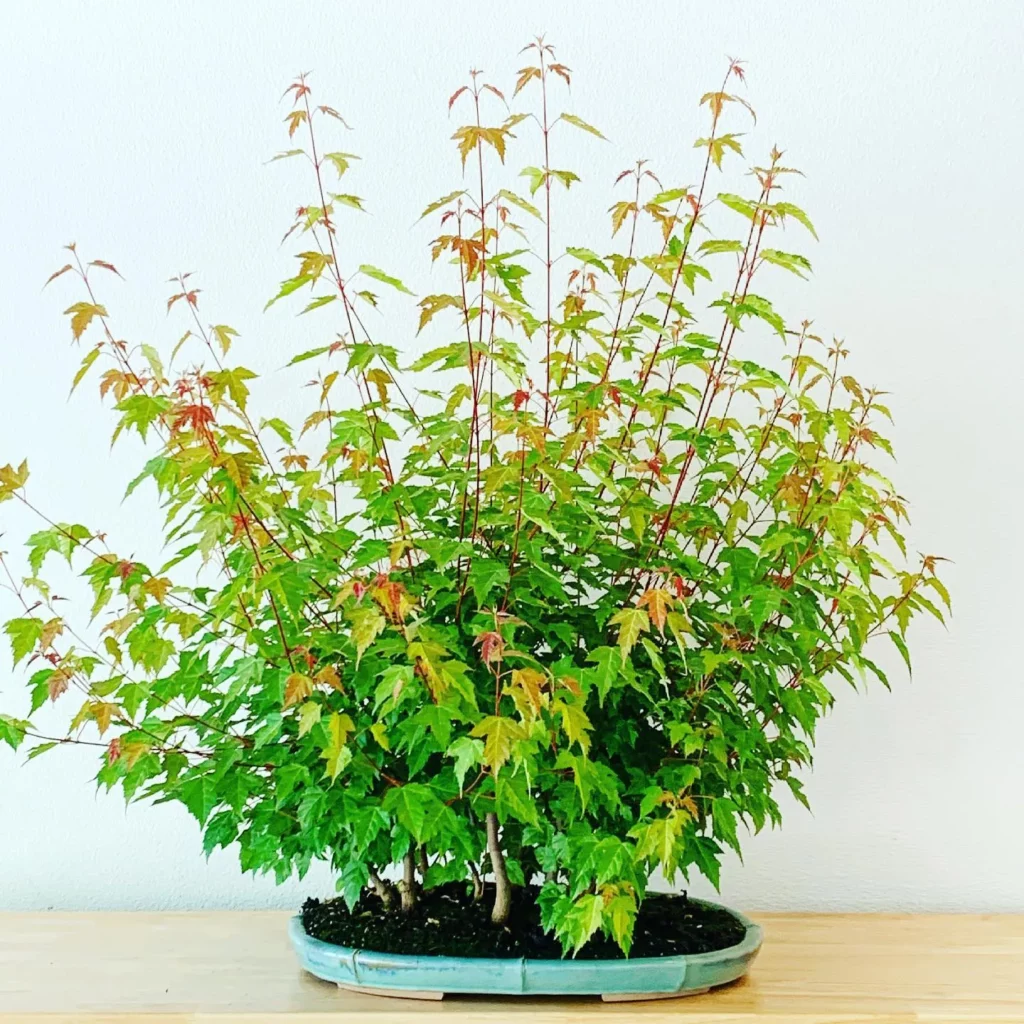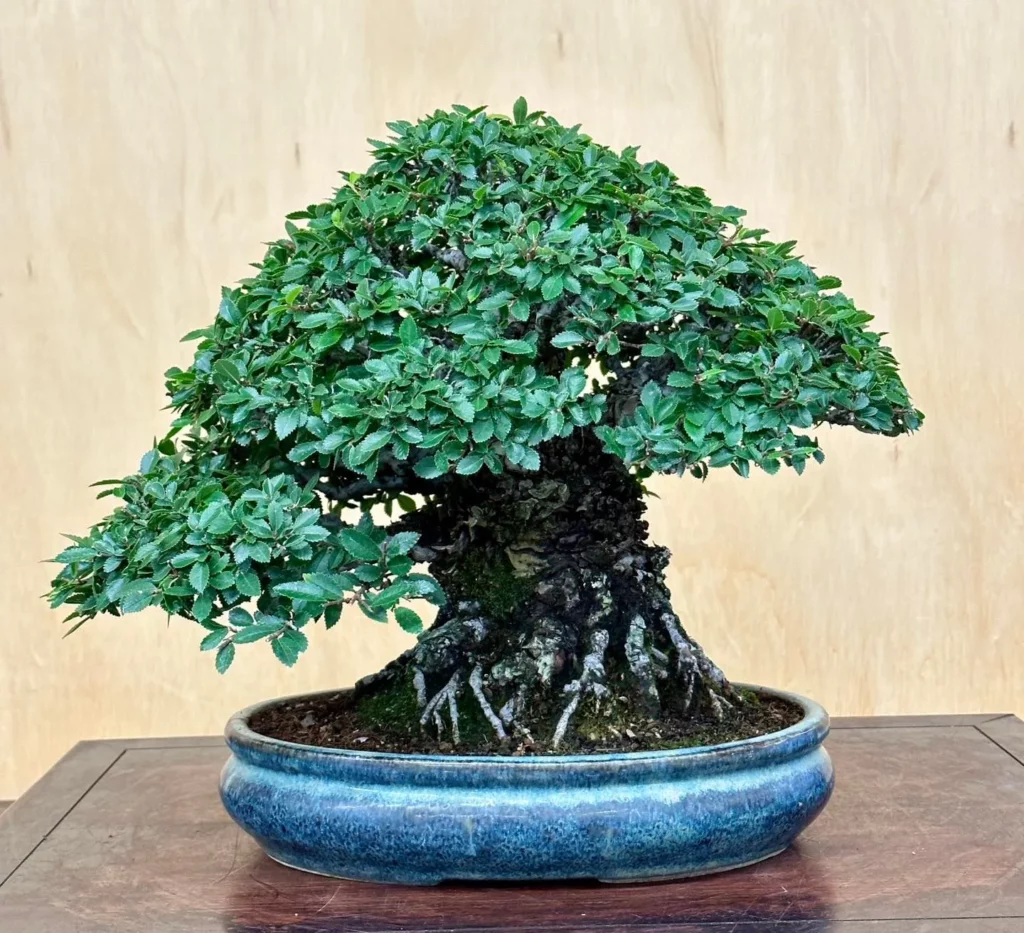To troubleshoot common bonsai problems, identify symptoms like yellowing leaves, wilting, or stunted growth, and address issues with watering, lighting, pests, or soil conditions accordingly.
Troubleshooting common bonsai tree problems is essential for ensuring the well-being and vitality of these miniature trees. Bonsai trees require special care and attention to thrive, and understanding how to identify and address common issues is crucial for their survival.
Key Takeaways:
- Yellowed or wilting leaves can be a sign of improper watering or nutrient deficiencies. Ensure you are watering your bonsai tree properly and providing it with the necessary nutrients.
- Fungal infections and leaf spots can occur if the tree is in a humid environment or lacks proper airflow. Take steps to improve air circulation and avoid overwatering.
- Infestations and ragged leaf edges are often caused by pests such as aphids or spider mites. Regularly inspect your bonsai tree for any signs of infestation and take appropriate measures to address the problem.
- Poor root growth and a loose or wiggling tree may indicate issues with root development. Make sure your bonsai tree has a suitable soil mixture and provide it with proper care to promote healthy root growth.
- Drooping or wilted branches can be a result of poor nutrition or mold. Ensure your bonsai tree receives adequate nutrition and avoid overwatering, which can lead to mold growth.
Identifying Common Bonsai Tree Problems



Bonsai trees can be susceptible to various problems, including diseases and pests, which can hinder their growth and overall health. It is important to identify these issues early on and take appropriate action to address them. Here are some common problems that bonsai trees may encounter:
- Yellowed or Wilting Leaves: Yellowed or wilting leaves can be a sign of improper watering or nutrient deficiencies. It is essential to maintain a proper watering schedule and provide adequate nutrients to prevent these issues.
- Fungal Infections and Leaf Spots: Fungal infections can cause visible spots on the leaves, leading to poor growth and overall health. Regular inspection and proper treatment can help prevent the spread of fungal infections.
- Infestations and Ragged Leaf Edges: Bonsai trees are vulnerable to infestations by pests such as aphids or spider mites, which can cause ragged leaf edges. Implementing effective pest control measures can help protect your bonsai from these destructive insects.
- Poor Root Growth and Loose/Wiggling Tree: A loose or wiggling tree may indicate poor root growth or improper anchoring. It is crucial to encourage healthy root development through proper watering, pruning, and repotting techniques.
- Drooping or Wilted Branches: Drooping or wilted branches can be a result of improper nutrition or the presence of mold. Providing adequate nutrition and addressing mold issues promptly can help restore the health of your bonsai tree.
- Swollen Bark and Diseases: Swollen bark can be a symptom of diseases that affect the overall health of the bonsai tree. Regular inspection and timely treatment can prevent the spread of diseases and promote a healthy bonsai.
- Off-Season Leaf or Needle Loss: Off-season leaf or needle loss can be caused by mold or fungal infections. Taking preventive measures and providing proper care can help minimize the risk of these issues.
Yellowed or Wilting Leaves
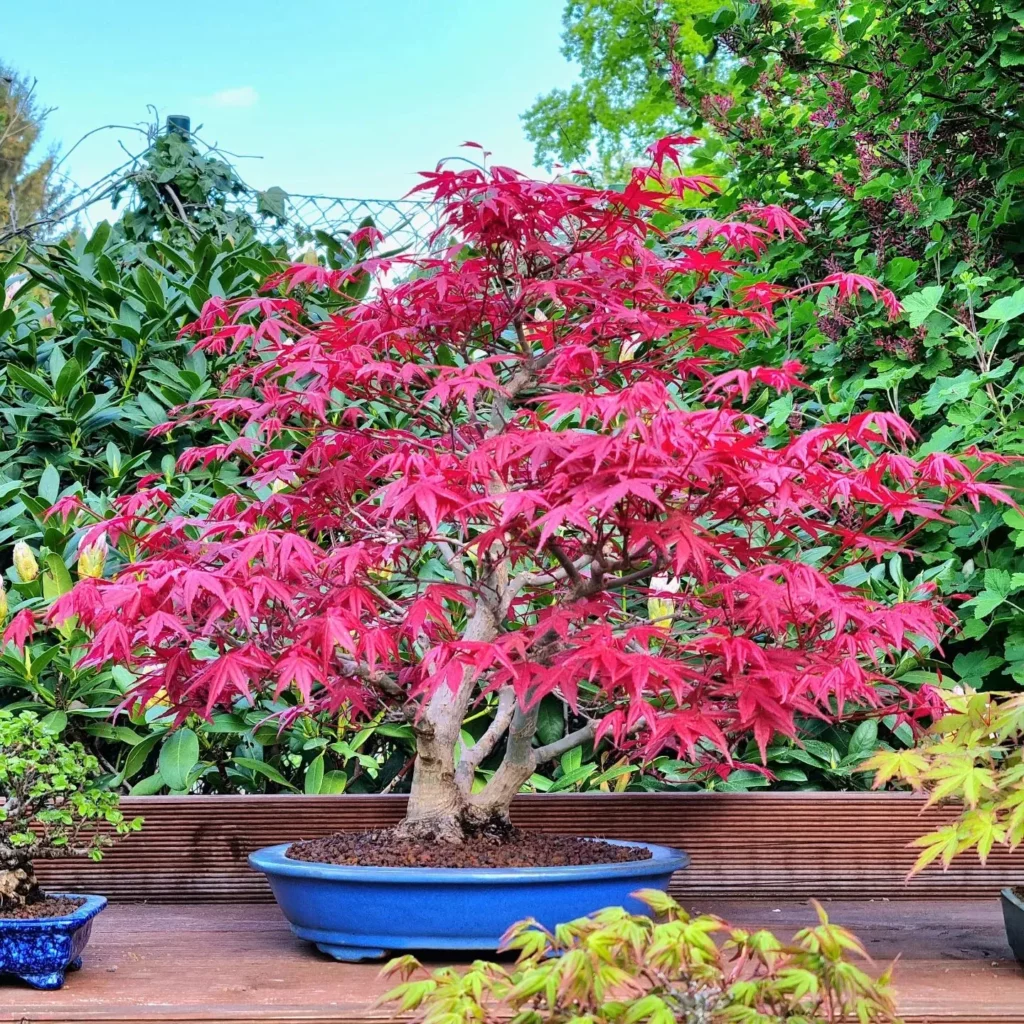
Yellowed or wilting leaves are a common problem in bonsai trees and can be indicative of improper watering. Bonsai trees require a delicate balance of moisture, and both overwatering and underwatering can lead to leaf discoloration and wilting.
To properly care for your bonsai tree and prevent yellowed or wilting leaves, it’s important to follow a bonsai tree watering guide. This guide will help you determine the appropriate watering schedule based on factors such as the climate, tree species, and pot size. Generally, bonsai trees should be watered when the soil feels slightly dry to the touch. However, it’s crucial to avoid letting the soil completely dry out between waterings.
No products found.
Overwatering can lead to root rot and other fungal issues, while underwatering can cause dehydration and nutrient deficiencies. In addition to proper watering, ensuring that your bonsai tree is in well-draining soil and receives the appropriate amount of sunlight will also contribute to its overall health and prevent leaf problems.
Fungal Infections and Leaf Spots



If you notice visible spots on the leaves of your bonsai tree, it may be a sign of a fungal infection or leaf spot disease. These issues can occur when the tree is exposed to damp and humid conditions for prolonged periods. Fungal infections can cause significant damage to the leaves and overall health of the tree if left untreated.
To address fungal infections and leaf spots, it is important to take immediate action. Firstly, carefully remove any infected leaves or branches to prevent the spread of the disease. Next, treat the affected areas with a fungicide specifically formulated for bonsai trees. Follow the instructions on the product label and apply the fungicide as directed.
| Fungal Infection | Cause | Remedy |
|---|---|---|
| Brown Spot | Moisture on leaves | Ensure proper air circulation and avoid overhead watering |
| Powdery Mildew | High humidity | Apply a fungicide and increase air circulation |
| Black Spot | Warm and humid conditions | Remove infected leaves and apply a fungicide |
Infestations and Ragged Leaf Edges

Infestations by pests such as aphids or spider mites can cause ragged leaf edges and hinder the healthy growth of your bonsai tree. These tiny invaders feed on the sap of your bonsai’s leaves, resulting in the leaves becoming distorted and tattered. If left untreated, these pests can weaken your tree and make it more susceptible to other problems.
To address infestations and prevent further damage, it’s essential to take immediate action. Start by inspecting your bonsai carefully, paying close attention to the undersides of leaves and the tips of branches. Look for any signs of pests, such as tiny insects or webbing. If you spot any, there are several steps you can take to combat the infestation:
- Pruning: Remove any heavily infested branches or leaves from your bonsai. This helps to contain the problem and prevent it from spreading further.
- Natural predators: Introduce beneficial insects, such as ladybugs or lacewings, to your bonsai. These natural predators feed on aphids and spider mites, helping to reduce their numbers.
- Soapy water solution: Mix a mild solution of water and dish soap and spray it onto the affected parts of your bonsai. This can suffocate and kill the pests.
- Neem oil: Dilute neem oil with water according to the instructions on the bottle and use it to spray your bonsai. Neem oil acts as a natural pesticide and can help control aphids and spider mites.
No products found.
Pest Prevention Tips:
Prevention is always better than treatment when it comes to pests and your bonsai tree. Here are some tips to help prevent infestations and maintain the health of your tree:
- Regularly inspect your bonsai: Take the time to thoroughly inspect your bonsai, especially the leaves and branches, for any signs of pests. Early detection is key to preventing the infestation from spreading.
- Promote good airflow: Proper air circulation around your bonsai can help deter pests. Trim any excess foliage or branches that may obstruct airflow.
- Practice good hygiene: Remove any fallen leaves or debris from the soil surface of your bonsai. This helps to eliminate hiding places for pests and reduces their access to your tree.
- Quarantine new additions: If you introduce a new bonsai tree to your collection, keep it separate from your existing trees for a period of time. This allows you to monitor the new tree for any signs of pests before integrating it into your bonsai display.
Poor Root Growth and Loose/Wiggling Tree
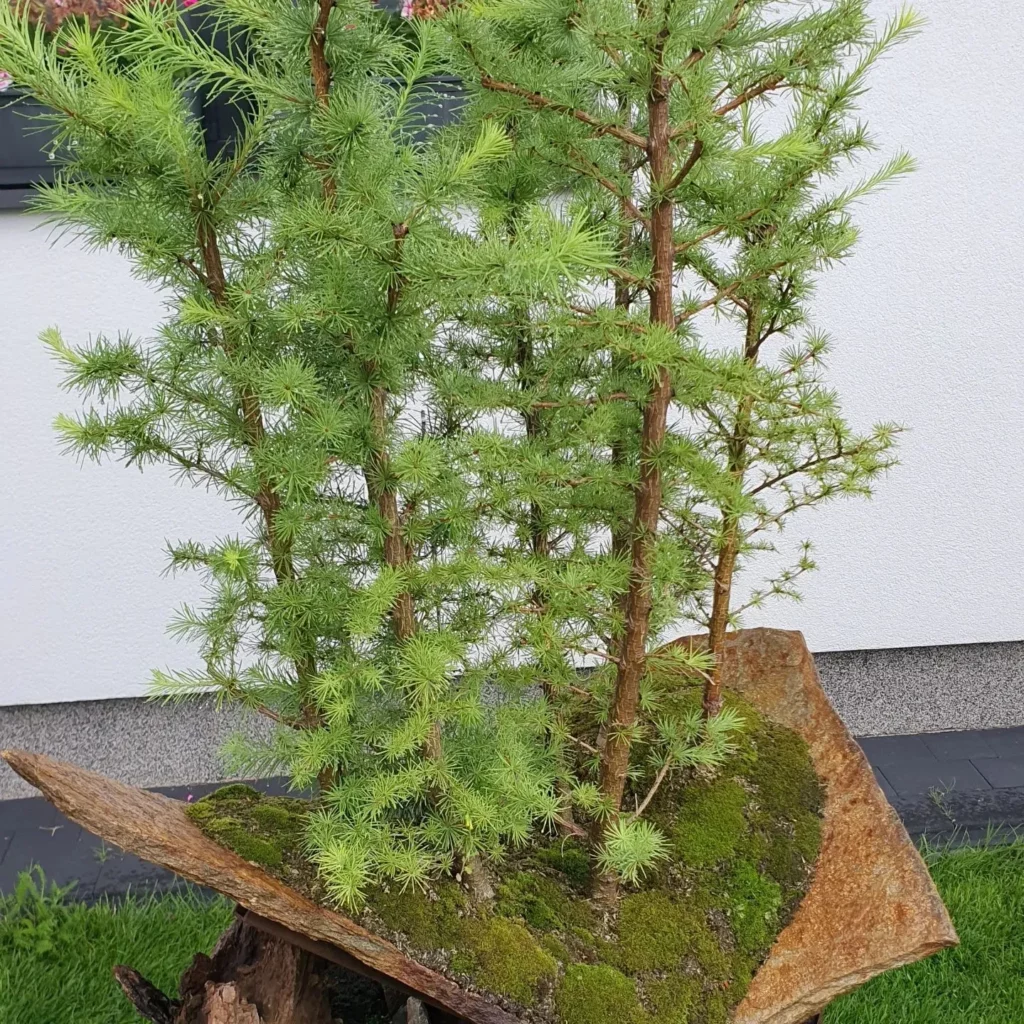


A loose or wiggling bonsai tree can be a sign of poor root growth, which is vital for the overall health and stability of the tree. Without strong and healthy roots, the bonsai may struggle to absorb water and nutrients from the soil, leading to weakened growth and potential long-term damage.
To promote proper root development and prevent a loose or wiggling tree, there are several key bonsai tree care practices to follow. Firstly, it’s essential to use the right bonsai soil mixture, consisting of a well-draining blend that allows for adequate airflow to the roots. This will encourage root growth and prevent waterlogging, which can lead to root rot.
| Tip | Explanation |
|---|---|
| Regular Check-ups | Regularly inspect your bonsai tree by gently lifting it from the pot and examining the root system. Look for healthy white roots and prune any damaged or overgrown ones. |
| Proper Watering | Water your bonsai tree thoroughly but avoid overwatering. Ensure that excess water can drain freely from the pot, and allow the soil to dry slightly between waterings to prevent root suffocation. |
| Root Pruning | Regularly trim and prune the roots of your bonsai tree. This helps to stimulate new root growth, maintain a healthy root system, and prevent root-bound conditions. |
Drooping or Wilted Branches

Drooping or wilted branches in your bonsai tree may be a sign of poor nutrition or mold infestation, both of which can be addressed through proper care and maintenance. To ensure your bonsai tree’s health, it is important to provide it with the right amount of water, nutrients, and light.
When watering your bonsai tree, it is crucial to strike a balance. Overwatering can lead to root rot and other fungal problems, while underwatering can cause the tree to wilt. As a general rule, it is best to water your bonsai when the soil’s top layer feels slightly dry. Use a watering can with a fine nozzle to gently water the tree, ensuring that the water reaches all parts of the soil.
Aside from proper watering, providing your bonsai with the right nutrients is essential. Use a balanced liquid fertilizer formulated specifically for bonsai trees, following the instructions on the packaging. Apply the fertilizer during the growing season, typically from spring to autumn, at regular intervals to promote healthy growth.
Lastly, pay attention to the lighting conditions for your bonsai tree. Most bonsai trees thrive in bright, indirect light. Place your tree near a window that receives ample sunlight but avoid exposing it to direct sunlight for extended periods, as this can cause leaf burn. If you notice your bonsai tree’s branches are wilting, try adjusting its position to a spot with better lighting.
- Drooping or wilted branches in your bonsai tree may indicate poor nutrition or mold infestation.
- Proper care and maintenance include providing the right amount of water, nutrients, and light.
- Water your bonsai tree when the top layer of soil feels slightly dry, using a fine-nozzled watering can.
- Use a balanced liquid fertilizer formulated for bonsai trees during the growing season.
- Place your bonsai tree in a location with bright, indirect light to promote healthy growth.
Swollen Bark and Diseases



Swollen bark on your bonsai tree can be a symptom of diseases or improper healing, which require attention and treatment. It is important to address these issues promptly to ensure the overall health and longevity of your bonsai.
One common disease that can cause swollen bark is verticillium wilt, a fungal infection that affects a wide range of trees, including bonsai. This disease is characterized by the wilting and yellowing of leaves, as well as the gradual decline of the tree’s health. If you notice swollen bark on your bonsai, along with these symptoms, it is crucial to take action.
To treat verticillium wilt and other bark-related diseases, it is recommended to prune away the affected branches and remove any infected bark. This will help prevent further spread of the disease. Additionally, applying a fungicide can help control the fungal infection. It is essential to follow the instructions provided by the fungicide manufacturer for the best results.
| Disease | Symptoms | Treatment |
|---|---|---|
| Verticillium Wilt | Swollen bark, wilting leaves, yellowing of leaves | – Prune affected branches – Remove infected bark – Apply fungicide |
| Anthracnose | Dark, sunken spots on leaves and stems | – Remove affected leaves and branches – Apply a copper-based fungicide |
| Root Rot | Drooping, discolored leaves, foul smell from soil | – Repot the bonsai in fresh, well-draining soil – Remove and replace affected roots – Adjust watering practices |
Off-Season Leaf or Needle Loss

If your bonsai tree is experiencing off-season leaf or needle loss, it may be a sign of a mold or fungal infection that needs to be addressed promptly. This type of leaf or needle loss is not normal and can indicate an underlying issue with the health of your bonsai tree.
To prevent further damage and revive your bonsai tree, it is important to take immediate action. Start by carefully inspecting the affected areas for any signs of mold or fungal growth. If you notice any, it is crucial to treat the infection as soon as possible.
| Tips for Addressing Off-Season Leaf or Needle Loss |
|---|
| 1. Remove affected foliage: Carefully prune and remove any leaves or needles that have already fallen or show signs of infection. This will help prevent the spread of the mold or fungus to other parts of the tree. |
| 2. Apply fungicide: Use a suitable bonsai-safe fungicide to treat the affected areas. Follow the instructions provided by the manufacturer to ensure proper application and dosage. |
| 3. Adjust watering and humidity: Improper watering or high humidity can contribute to the development of mold and fungal infections. Ensure that your bonsai tree is receiving the correct amount of water and that the humidity levels are appropriate for its specific species. |
| 4. Improve ventilation: Good air circulation around your bonsai tree is essential for reducing the risk of mold and fungal infections. Consider moving your tree to a location with better airflow or using a small fan to improve ventilation. |
Specific Issues for Different Bonsai Types
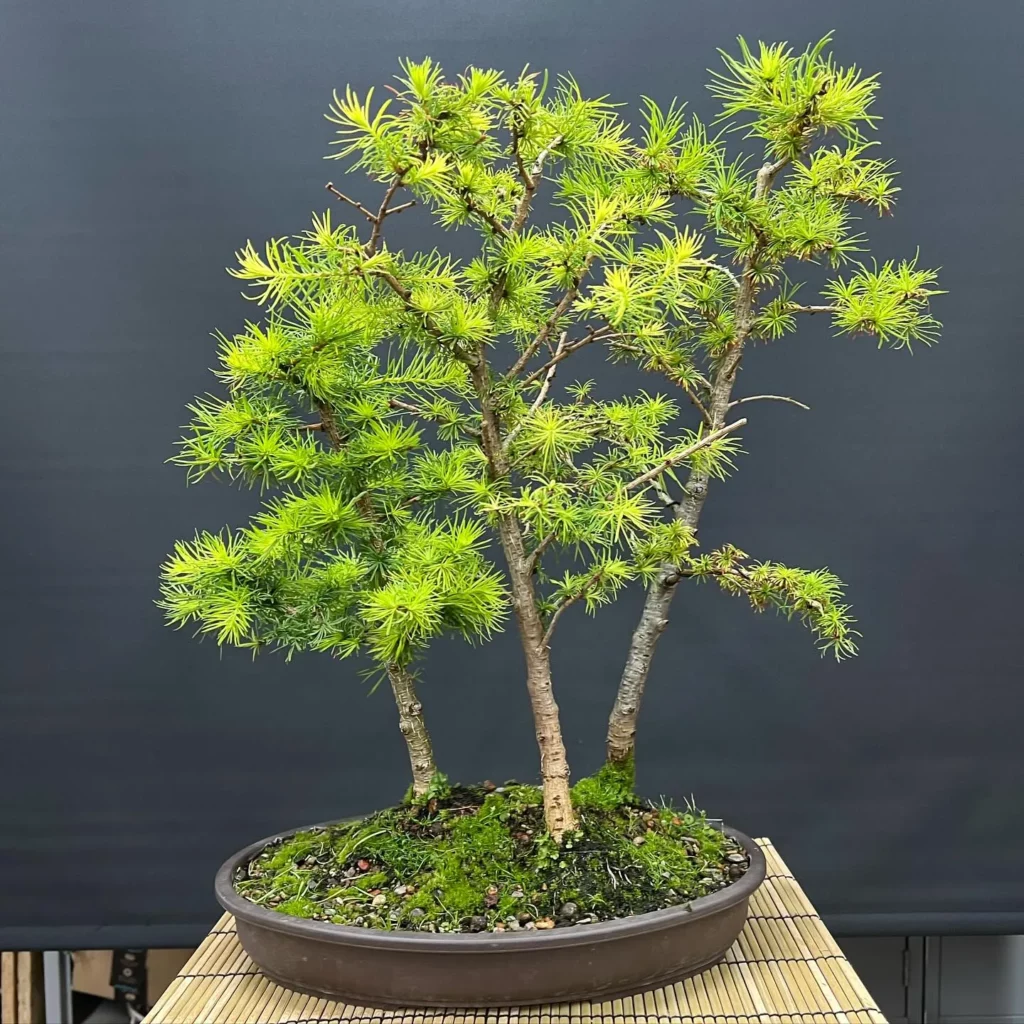


While many bonsai tree problems are similar across different types, each variety may have specific issues that require attention and specialized care. Let’s take a closer look at some of the common problems and care instructions for specific bonsai tree types:
Ficus Bonsai Tree Problems
No products found.
Ficus bonsai trees are prone to issues such as leaf drop, root rot, and pests like spider mites. To prevent leaf drop, ensure the tree is placed in a spot with consistent temperature and avoid sudden changes in light and humidity. Proper watering practices and well-draining soil are crucial to prevent root rot. Regular inspection for pests and appropriate treatment can help maintain the health of your ficus bonsai tree.
Carmona Bonsai Tree Issues
No products found.
Carmona bonsai trees, also known as Fukien tea trees, are susceptible to pests like aphids and whiteflies. Regularly check the leaves for signs of infestation and use organic insecticides if necessary. Carmona bonsai trees also require well-draining soil and regular pruning to maintain their shape and health.
Jade Bonsai Tree Care
No products found.
Jade bonsai trees are relatively easy to care for but can develop issues like root rot if overwatered. Ensure the soil is allowed to dry out between waterings to prevent this problem. Positioning the tree in a location with bright, indirect light will help it thrive. Pruning should be done cautiously, as jade bonsai trees have slow growth and may take longer to recover from aggressive pruning.
Chinese Elm Bonsai Tree Maintenance
No products found.
Chinese Elm bonsai trees are generally hardy but can be susceptible to powdery mildew and aphids. Regularly inspect the leaves and stems for signs of these pests and treat as necessary. These trees thrive in a location with bright, indirect light and prefer a slightly damp soil. Avoid overwatering to prevent root rot.
Juniper Bonsai Tree Problems
No products found.
Juniper bonsai trees are susceptible to spider mites, scale insects, and juniper rust. Inspect the leaves and branches regularly for signs of infestation or diseases. Follow a proper watering schedule, allowing the soil to dry partially between waterings. Juniper bonsai trees also require periodic pruning to maintain their shape and encourage back-budding.
Maple Bonsai Tree Care
No products found.
Maple bonsai trees are vulnerable to leaf spot diseases, especially if the foliage remains wet for extended periods. Ensure proper air circulation and avoid overhead watering to prevent these issues. Maples also benefit from regular fertilization during the growing season and may require periodic branch and root pruning to maintain their desired shape.
| Bonsai Tree Type | Common Problems | Care Instructions |
|---|---|---|
| Ficus | Leaf drop, root rot, spider mites | Consistent temperature, well-draining soil, pest control |
| Carmona (Fukien tea) | Aphids, whiteflies | Regular inspection, organic insecticides, pruning |
| Jade | Root rot | Allowing soil to dry out, bright indirect light |
| Chinese Elm | Powdery mildew, aphids | Bright indirect light, slightly damp soil |
| Juniper | Spider mites, scale insects, juniper rust | Regular inspection, proper watering, pruning |
| Maple | Leaf spot diseases | Air circulation, proper watering, fertilization, pruning |
Reviving a Dying Bonsai Tree

If your bonsai tree is on the brink of dying, there are steps you can take to revive it and promote its vitality and health. First and foremost, it’s crucial to assess the underlying cause of the tree’s decline. Is it a result of inadequate watering, nutrient deficiency, pest infestation, or improper positioning? Once you identify the problem, you can implement the appropriate remedies.
One of the most common reasons for a dying bonsai tree is improper watering. Bonsai trees require consistent moisture, but overwatering can lead to root rot and under watering can cause dehydration. To ensure proper hydration, check the soil moisture regularly and water the tree accordingly. It’s important to water the bonsai thoroughly, allowing the excess water to drain through the holes at the bottom of the pot.
Another factor to consider is the nutrient level in the soil. Bonsai trees need a balanced diet of nutrients to thrive. You can provide this by regularly fertilizing the tree with a slow-release bonsai fertilizer. Be cautious not to over-fertilize, as it can burn the roots and cause further damage to the tree.
Lastly, check for any signs of pest infestations. Insects like aphids, spider mites, and scale insects can weaken the bonsai tree by sucking its sap and transmitting diseases. If you notice any pests, treat the tree with an appropriate insecticide or try natural remedies like neem oil or insecticidal soap. Additionally, make sure to remove any dead or diseased branches and leaves to prevent the spread of infection.
| Causes of a Dying Bonsai Tree | Remedies |
|---|---|
| Inadequate watering | Check soil moisture regularly and water thoroughly |
| Nutrient deficiency | Fertilize regularly with a slow-release bonsai fertilizer |
| Pest infestation | Treat with appropriate insecticide or natural remedies |
| Improper positioning | Ensure the bonsai receives adequate light and proper temperature |
“A dying bonsai tree can be revived with proper care and attention, allowing it to regain its health and vitality.” – Bonsai Enthusiast
Essential Bonsai Tree Care Practices

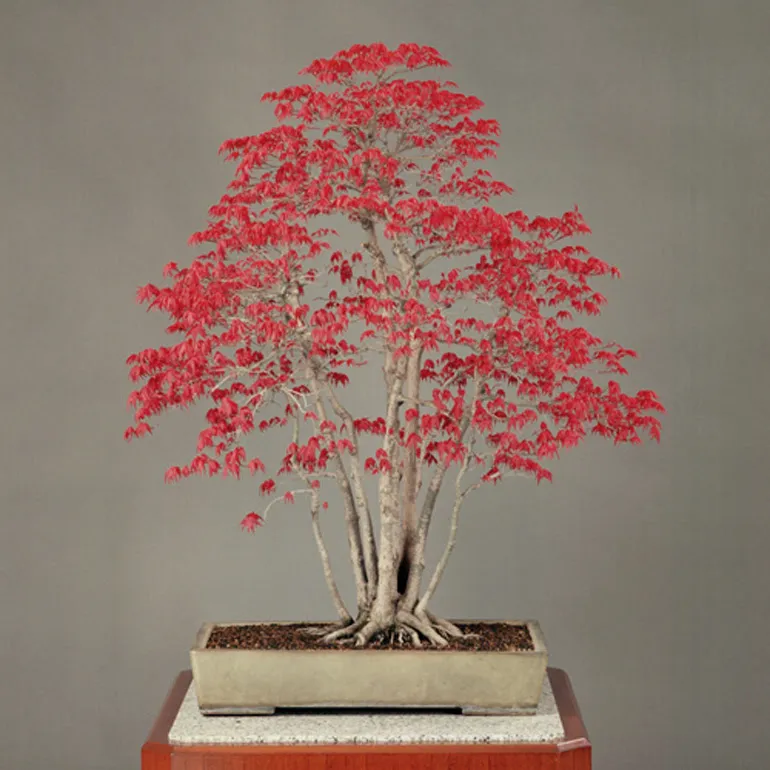

Proper care practices, including pruning, watering, maintaining soil quality, and overall maintenance, are crucial for the health and vitality of your bonsai tree. Pruning helps shape the tree and encourages new growth. Regularly remove dead or unwanted branches to maintain its aesthetic appeal. Remember to use sharp bonsai shears to make clean cuts and avoid damaging the tree.
Watering is another essential aspect of bonsai tree care. It is important to find the right balance, as both overwatering and underwatering can harm your tree. The frequency of watering will depend on various factors such as the species of bonsai, size of the pot, and weather conditions. To determine when to water, check the moisture level of the soil by gently inserting your finger about an inch deep. If the soil feels dry, it’s time to water. Ensure that you provide enough water until it drains out from the drainage holes.
Soil quality plays a significant role in the health of your bonsai tree. Using a well-draining soil mixture specifically designed for bonsai is crucial. It should retain enough moisture without becoming waterlogged. Additionally, periodically repotting your bonsai tree helps refresh the soil and provide more space for root growth. Follow the recommended repotting schedule for your specific bonsai species.
Overall maintenance of your bonsai tree involves regular care activities such as fertilizing, providing sufficient light, and addressing any pest infestations. Fertilize your bonsai during the growing season using a balanced fertilizer to ensure it receives the necessary nutrients. Place your bonsai tree in a spot where it can receive adequate sunlight, while also protecting it from extreme heat or cold. Regularly inspect your tree for any signs of pests such as aphids, spider mites, or scale insects. If infestations occur, take immediate action to address them.
FAQ
Q: What are some common warning signs of an unhealthy bonsai tree?
A: Some common warning signs of an unhealthy bonsai tree include yellowed or wilting leaves, visible spots on the leaves indicating a fungal infection, ragged leaf edges caused by infestations like aphids or spider mites, a loose or wiggling tree indicating poor root growth, drooping or wilted branches due to poor nutrition or mold, swollen bark caused by diseases or improper healing, and off-season loss of leaves or needles signaling a mold or fungal infection.
Q: What are some specific issues for different types of bonsai trees?
A: Different types of bonsai trees may have specific issues and care instructions. For example, ficus bonsai trees may be prone to certain problems, as well as Carmona, jade, Chinese Elm, juniper, and maple bonsai trees.
Q: How can I revive a dying bonsai tree?
A: To revive a dying bonsai tree, it is important to focus on proper care practices. This includes proper watering, fertilizing, addressing pest infestations, and repotting the tree as necessary.
Q: What are some essential bonsai tree care practices?
A: Essential bonsai tree care practices include proper pruning techniques, watering according to the specific needs of the tree, maintaining the proper bonsai soil mixture, ensuring sufficient light exposure, addressing pest infestations promptly, and positioning the tree in an ideal spot for its overall health.


